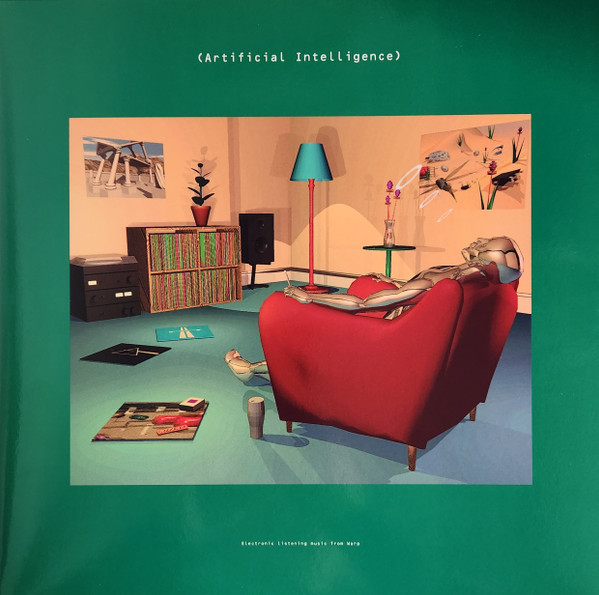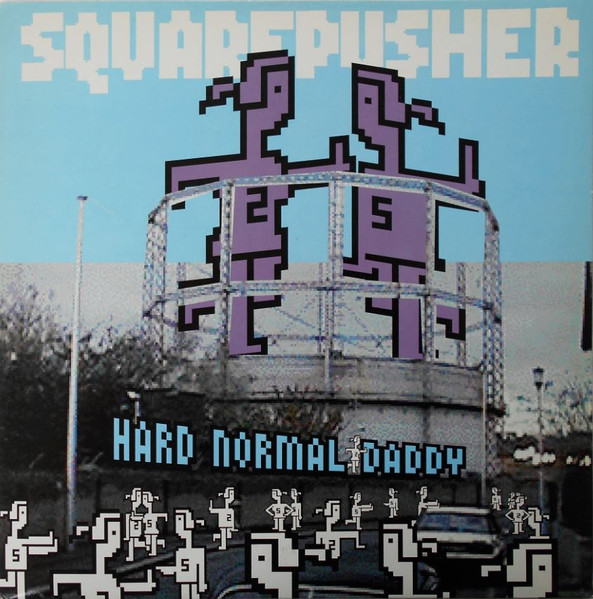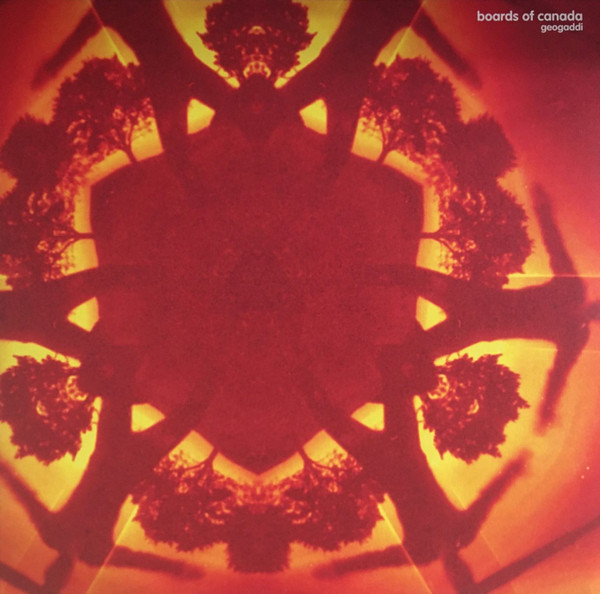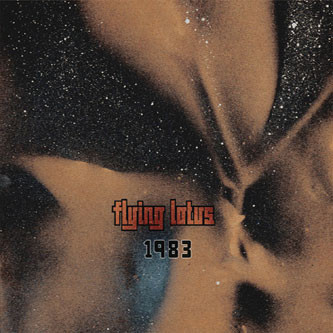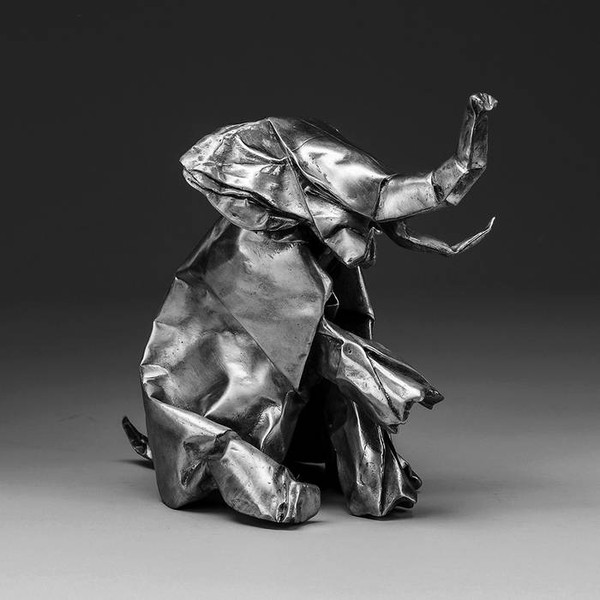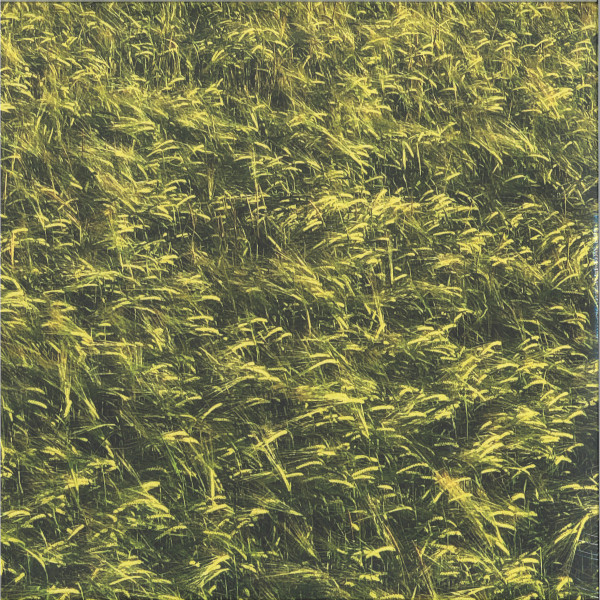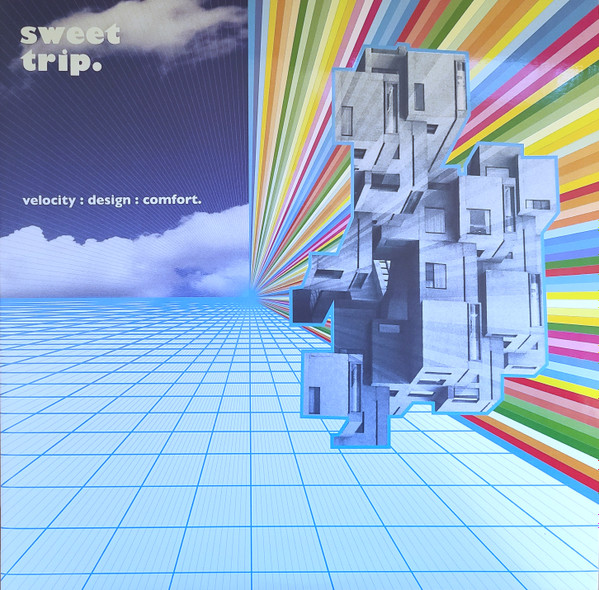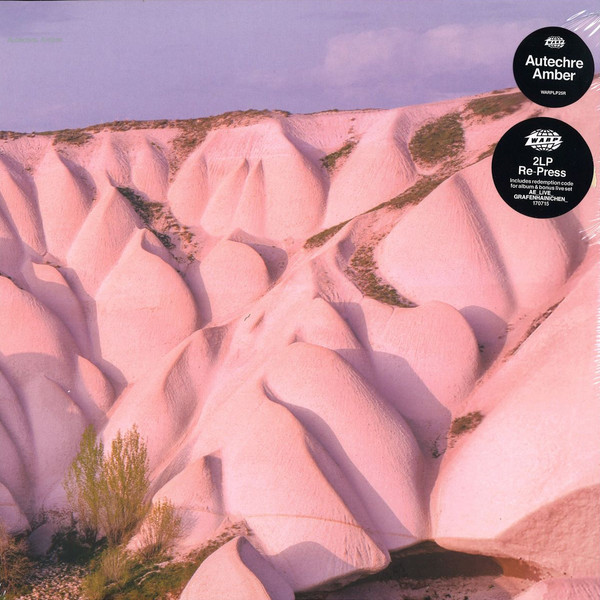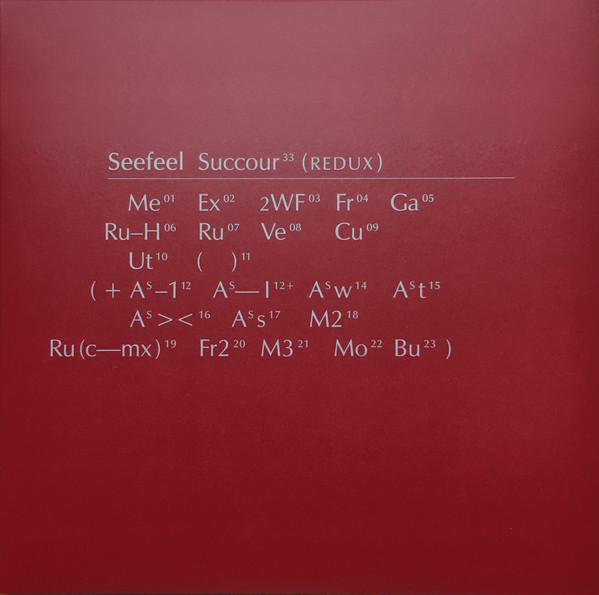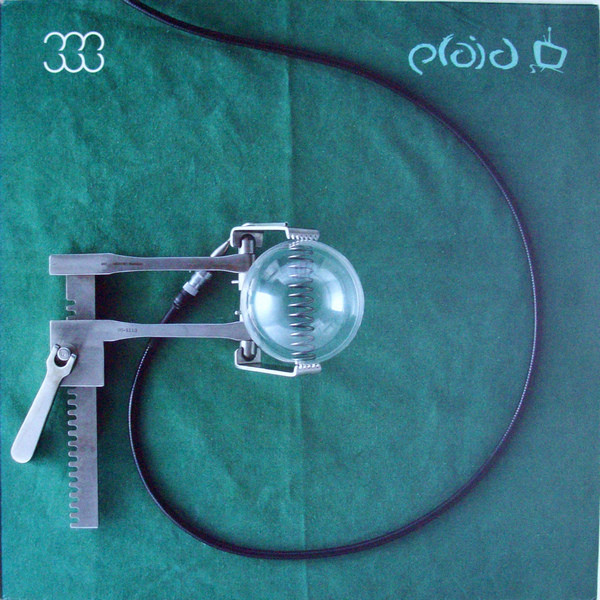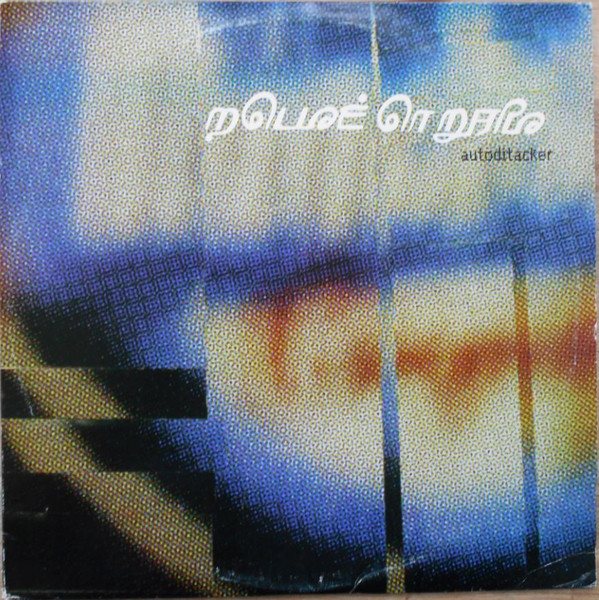How IDM Took Shape and the Albums That Defined It
Frenetic, heady, and malleable — IDM records from artists such as Aphex Twin, Autechre, and Squarepusher have influenced producers and listeners for decades.
The term “intelligent dance music” burst into the heady record collector’s lexicon in the early ‘90s, most likely starting with Warp’s Artificial Intelligence in 1992 compilation. While there are earlier examples of the phrase, Warp’s compilation cracked the earth, sending an avalanche of discourse between posters and wall-flower club-goers.
Compiled in the early 1990s by music enthusiasts Alan Parry and Brian Behlendorf, the Intelligent Dance Music (IDM) List was a regular newsletter sent to a selection of like-minded people who, like Parry and Behlendorf, were interested in progressive and cerebral approaches to electronic dance music.
The pair utilized Usenet, a pre-internet computer-linked communication system, to create discussions around labels like Warp and Rephlex and early work from Aphex Twin. Their IDM List became a go-to roll call of the best new artists and musicians creating post-club beats and electronica.
IDM is more of a philosophical approach than a sonic one. The eye-roll-inducing name signifies a bold approach to production, aiming to push the sonic boundaries of electronic music and capture the imagination of fans who prefer a pair of headphones and a seat on the sofa to crowded rooms and light shows.
More than thirty years on, the IDM identifier still exists as a way of characterizing music founded on pushing the limits of studio-based experimentation. It is a movement that has spawned a whole gamut of subgenres, from click + cuts to glitch, breakcore, cybergrind, and beyond.
Expanding on ideas first developed using late-eighties Detroit techno, early house music, ambient/chill-out circles, and freeform jazz, here are fifteen essential IDM albums.
Various
Artificial Intelligence (1992)
The compilation that solidified the future of IDM as a serious genre — Artificial Intelligence contained everything Parry and Behlendorf envisaged in terms of artists and direction. Released on Warp — a record label that is still pushing dance music’s limits today — the album introduced the label’s roster and philosophy. Furthermore, Warp used the set to show how electronic music didn’t just belong on the dance floor, as is apparent by the living room setting depicted on the cover.
Showcasing the move towards post-club listening and ambient techno, the album’s listing included tracks from IDM spearheads the Dice Man (aka Richard James/ Aphex Twin, here using the “Polygon Window” title that would morph into another of his pseudonyms) and Autechre — IDM had officially entered the chat.
The Future Sound Of London
Accelerator (1992)
FSOL, comprised of Brian Dougans and Garry Cobain, started their IDM crusade in Manchester while studying electronics. After making jingles for MTV and Dougans’ early success as part of the Stakker multimedia project (and Humanoid’s “Stakker Humanoid” single), the pair moved to London, set up their Earthbeat studio, and recorded Accelerator for the Jumpin’ and Pumpin’ label.
Built from the duo’s vast library of samples, Accelerator included “Papua New Guinea,” their cinematic crossover debut single centered around Lisa Gerrard’s vocal from Dead Can Dance’s “Dawn of the Iconoclast.” Accelerator was the apotheosis of Dougans and Cobain’s early experimental process, the perfect collision of exotic electronica and organic samples.
Aphex Twin
Selected Ambient Works ’85-92 (1992)
Aphex Twin’s early work enthralled the IDM List subscribers, and Selected Ambient Works ’85-92 became another stepping stone in their curated development of IDM. Released on a subsidiary of Belgian dance label R&S, Selected Ambient Works — a collection of tracks Richard James had recorded in the late 1980s — was just one of several releases James was issuing at astonishing speed. He’d already formed the Rephlex Records imprint with Grant Wilson-Claridge in 1991 and was also recording and producing as Caustic Window and Power-Pill.
Of course, there was more to come. And (although he might not like it, given his famed reclusive demeanor), Richard D. James remains at the top table of IDM heroes, with the sonically lush Selected Ambient Works ’85-92 album an essential pillar of post-modern electronic music.
u-Ziq
Lunatic Harness (1997)
Where would IDM be without Mike Paradinas? Another producer who wonders what would happen if…?, Paradinas got early inspiration from listening to Detroit techno on London’s KISS pirate station before releasing albums on Rephlex and the Hi-Rise.
Issued on his own Planet Mu imprint, Lunatic Harness was Paradinas’ fourth set under the u-Ziq name and a conscious move away from the sometimes overly abrasive beats that dominated areas of IDM at the time. For Lunatic Harness, Paradinas tipped the scales away from full-on rhythmic frenzies by ushering in quasi-pop and filmic melodies without ever fully leaving the complex breaks and beats behind.
Squarepusher
Hard Normal Daddy (1997)
Hard Normal Daddy is a totem project. At times a template for the jazz’n’bass beats subgenre, it also mangled thriller movie soundtrack tropes with off-kilter funk and mashed garbled, distorted vocals with hectic broken beats. Tom Jenkinson had already worked with Rephlex for his 1996 album, Feed Me Weird Things, and Hard Normal Daddy saw the beginning of his relationship with Warp.
Hard Normal Daddy has feet in both jazz and soundtracks camps, and is a grab-bag of interlocking ideas as Jenkinson wrestles his influences (and his own bass-playing) into a wondrous, layered miasma.
Mira Calix
One On One (2000)
In a scene light on female input, Mira Calix blazed forward. Born Chantal Passamonte, Mira approached her sound production as sculptors approached their medium. She was an artist as much as a musician, blessed with an ability to understand how sonic vibrations could become perceivable shapes.
Released on Warp, her debut album, One On One, swerves traditional post-dance figures (intro, breakdown, filters) in favor of a mix of lingering sound art and classically symphonic tracts of electronica. The result is intricate and beautiful, and she would go on to work with opera companies, orchestras, and dance troupes.
Jan Jelinek
Loop-Finding-Jazz-Records (2001)
Jan Jelinek’s second album (and the first under his own name) leaned into IDM’s minimalist roots. Born in Darmstadt, Germany, Jelinek moved to Berlin to study sociology and philosophy before getting involved in the city’s thriving techno scene. Jelinek became fascinated by the intelligence of simplicity in rhythm and sound, and began experimenting with samples from classic Motown tracks, reducing them to their most basic elements.
Released on Stefan Betke and Barbara Preisinger’s ~scape label, Loop-Finding-Jazz-Records is Jelinek applying the same thinking to jazz: boiling down samples until they become unrecognizable and reconfiguring them into abstract, minimal electronic forms. The skeleton of club beats remain, but instead of thick kicks, Jelinek opts for slightly detuned blips, and in place of snares, he employs miniature cracks. The space surrounding the “percussion” is texture-ridden, with scratchy, vinyl-noise wallpaper encompassing it. While Loop-Finding leans closer to traditional glitch than IDM, Jelinek’s examination and subsequent Occam’s razoring makes it essential listening.
Four Tet
Pause (2001)
On Kieran Hebden’s Pause, he moved away from early IDM tropes. Gone were the moved the infinite breakbeat variations and math-like structures. In its place, he offered a more organic, flowing sound.
Hebden came to IDM from a different direction. His Four Tet production style is warm and enveloping, incorporating harp, acoustic guitar, and piano loops into the album’s fabric. There’s jazz here too; however, not in the way aggressive way Squarepusher utilized it. Instead, Four Tet uses syncopated snare drum and ride cymbal patterns and textures often associated with spiritual jazz. In a sea of clattering beats and edgy synthetic interventions, Pause is a still sea.
Boards Of Canada
Geogaddi (2002)
Geogaddi is like the Sphinx — all-seeing without explaining, a steady force in the realms of IDM. What makes the album even more Sphinx-like is the number of conspiracy theories that have cropped up around it. Following the success of Boards of Canada’s debut 1998 album, Music Has The Right To Children, brothers Marcus Eoin and Michael Sandison extended their fascination for wonky ’70s analog synthwave into Geogaddi, their second set for Warp.
Less immediately accessible than Music… and released without a breakdown of its themes, theorists squabbled over the album’s title (perhaps a riff on the Incredible String Band’s “Koeeoaddi Here” track), the album’s length (sixty-six minutes and six seconds), the cover artwork (was that a reference to the effigy in ’70s folk-horror movie, The Wicker Man?) and everything in between. Whatever the explanation, Geogaddi is an album of dark, unsettling wonder.
Venetian Snares
Rossz Csillag Alatt Született (2005)
Released on Paradinas’ Planet Mu label, Rossz Csillag Alatt Született (Hungarian for “Born under a bad star”) finds Aaron Funk in a full Venetian Snares battle dress. The Canada-born producer had already made a name for himself as the king of smashing beats to pieces and building them up again, and Rossz Csillag Alatt Született is a mighty display of his production acumen.
As Jelinek did with jazz, Funk sampled microseconds of classical music and battered them into his complicated, off-the-meter time signatures for a set that is more crammed with ideas than the Library of Congress. It’s blistering. Breakbeats sound closer to drills than drums, adding a cold tinge to the texture. Speed freaks look no further.
Flying Lotus
1983 (2006)
It’s a small leap from an IDM track to a hip-hop instrumental, especially given both genres’ interest in the possibilities of jazz. Named after his birth year and released on California’s Plug Research imprint, Flying Lotus’ debut album is steeped in the producer’s admiration of the late, great J Dilla. Furthermore, given FlyLo’s family connections (his great aunt was Alice Coltrane, jazz pianist, harpist, and ex-wife of John Coltrane), there’s an inevitability in his drawdowns from jazz beats and inflections.
All these ingredients apply here. However, 1983 is more than another jazz-flecked, hip-hop instrumental set — it reveals FlyLo’s ability to shape layers of mood and tone, working as the ideal introduction to the mind of a gifted producer.
Clark
Body Riddle (2006)
If there’s an artist and producer who encapsulates the story of IDM, it’s Chris Clark. Clark’s third album and another Warp release, Body Riddle, pulled together the British producer’s admiration for Richard James with his phenomenal attention to the tiniest of details. And, as with Four Tet, Clark understands the role of acoustic instruments. He uses his chops as a drumming enthusiast here to add a rolling, tumbling live feel to the work featured.
Clark said Body Riddle was an exercise in listening, an album that could be enjoyed and analyzed in a single sitting. Although true, one of the set’s real achievements is its depth: repeated Body Riddle experiences lead to the revealing of deeper intricacies within. Warp reissued Body Riddle in 2022 alongside 05-10, a collection of Clark’s previously unreleased work, as Body Double.
Jlin
Black Origami (2017)
Emerging from Chicago’s footwork scene, Jerrilynn Patton proved more than a genre-led producer with her 2015 debut album, Dark Energy. The record gave Jlin an emotional outlet on an album that is dark in name and nature. The follow-up may still have footwork traces, but Black Origami is a monolithic IDM production masterpiece.
The darkness of Dark Energy remains for the set, but there is also a deep dive into percussion here – rhythms, splashes, pulses, outbursts, explosions – and the movements percussion brings forth. (Jlin collaborated with Indian dancer and performance artist Avril Stormy Unger as the album developed). Unfolding and refolding Jlin’s rigorous percussive investigations, Black Origami profiles the work of a singular talent.
Autechre
NTS Sessions 1-4 (2018)
Autechre was there from the start. The two veterans of Manchester’s electro scene, Sean Booth and Rob Brown, began making music together in the late 1980s, first compiling mixtapes and then investigating the parameters of samplers and drum machines. Twelve albums followed their inclusion on the Artificial Intelligence compilation, and Autechre became a leading light on the international IDM circuit.
NTS Sessions 1-4 first arrived as a series of radio programs for U.K. underground music station NTS. When the station announced an Autechre set, it was under the assumption that Booth and Brown would be playing several elongated DJ sets. Not so. During four two-hour shows, Autechre pushed IDM to its ideological end. Sessions is Autechre in their pomp, still creating transcendent, post-industrial techno and bleepy glitches from a cosmos of their own making.
Skee Mask
Pool (2021)
Munich-based Skee Mask’s 2021 album, Pool, is the sound of the producer forging ahead in his interpretive IDM mission after the gloomy days of the COVID lockdown. Previous albums, Shred (released in 2016) and Compro (2018), were created while Müller was a resident DJ at Munich’s legendary Blitz Club, and the venue provided the perfect sandbox for shaping Skee Mask’s acid house-influenced take on techno.
As with Shred and Compro, Pool was released on the German label, Ilian Tape, and found Müller mashing down broken rhythms with squelchy acid and textured ambient washes. There’s the ghost of The Man-Machine-era Kraftwerk here too, as distant melodies slalom in and out of skittering beats. Skee Mask is always at his best when he’s throwing together early IDM influences and, with its attention to drum’n’bass breaks and even 90s rave-y hardcore, Pool revealed Müller’s understanding that club-influenced music-making can be as much about good fun as intelligent assemblage.
More essential IDM records
-
Richard D. James AlbumAphex Twin2020IDM, Acid, Drum n Bass, Jungle, ExperimentalVinyl, LP, Reissue
-
-
Velocity : Design : ComfortSweet Trip2021Leftfield, Abstract, IDM, Shoegaze2 x Vinyl, LP, Limited, Reissue
-
-
-
-
-
-
KEEP DIGGING
Don’t miss a beat
Subscribe to Discogs’ email list to learn about sales, discover music, record collecting guides, product tips, limited edition offers, and more.

